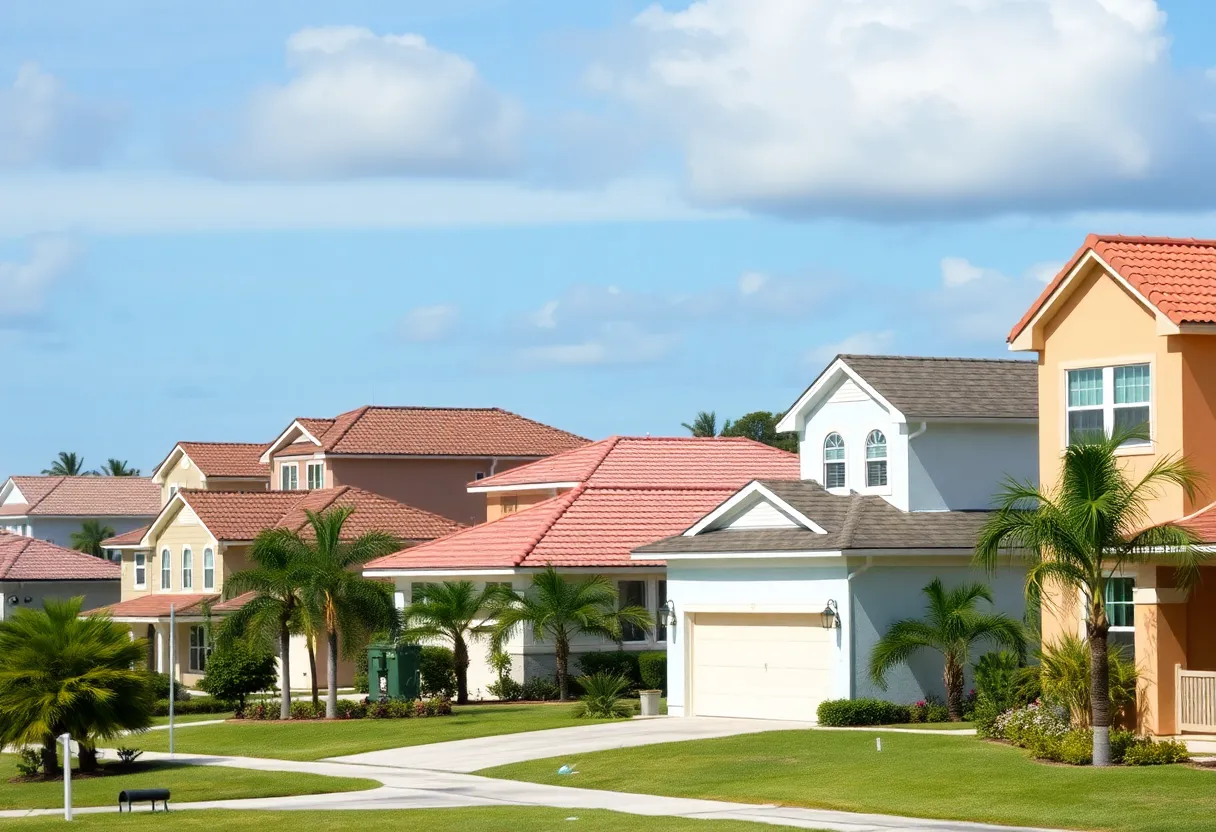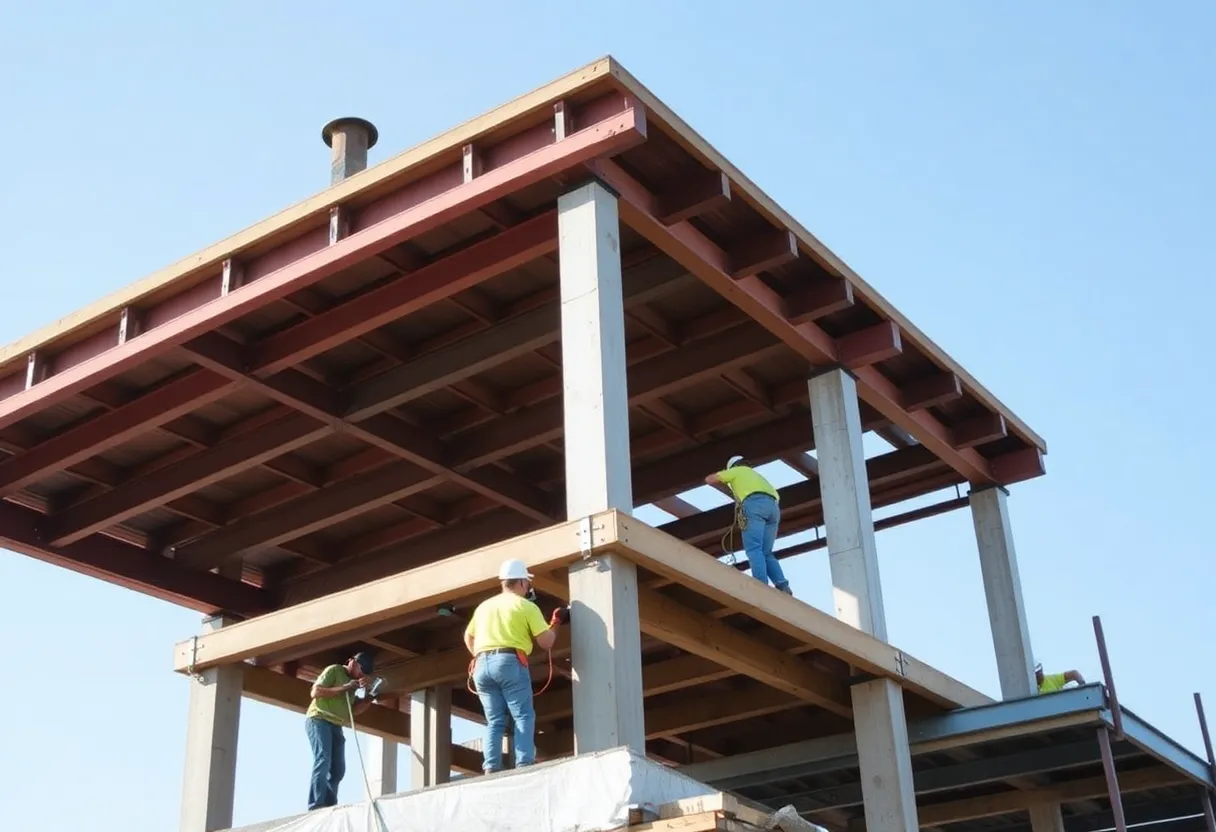News Summary
Florida’s housing market is in a state of flux, characterized by declining prices and increasing inventory across eight major metropolitan areas. Cities like Fort Myers, Lakeland, and Orlando are seeing a slowdown in new-home sales, prompting builders to offer buyer incentives to attract interest. This trend is not isolated to Florida, as many national markets are experiencing similar difficulties. Rising mortgage rates and insurance costs have further complicated the buying landscape, leading to adjustments in construction strategies. Despite these challenges, long-term opportunities may arise for buyers in this transitioning market.
Florida’s Housing Market Faces Significant Challenges as Prices Drop and Inventory Rises
Florida’s housing market is undergoing a substantial transformation this spring, a season that typically heralds brisk activity in the real estate sector. Currently, at least eight metropolitan areas across the state are grappling with slow new-home market conditions, leading to a noticeable decline in both prices and sales.
Areas Experiencing Slowdown
The affected areas include prominent cities such as Fort Myers, Lakeland, Naples, Jacksonville, Orlando, Sarasota, Tampa, and West Palm Beach. These regions have reported a decrease in newly built home sales, highlighting a trend of weakening prices. A growing reliance on buyer incentives, including discounts and other promotional offers, is becoming increasingly common in response to this slowdown.
National Trends Mirror State Challenges
Florida’s situation reflects a broader national trend, with over half of the new-home markets across the country facing similar slowdowns. New-home inventory is at its highest level since 2010, particularly concentrated in Florida and Texas, the two states currently pushing the boundaries of new construction.
Impact of Increased Construction
Since 2020, Florida has built more new homes than any other state in response to a surge in housing demand and domestic migration. Unfortunately, many of these newly constructed homes are now sitting idle because potential buyers are deterred by factors such as soaring mortgage rates, climbing home insurance premiums, and increasing HOA fees. Today, mortgage rates hover around a steep 7%, further complicating the buying landscape.
Market Adjustments by Builders
As demand continues to slow, builders are adjusting their strategies by pulling back on new construction. However, this transition is a gradual process that will take time to manifest fully in the market. New-home listings in Florida peaked at 54,824 in January 2025, an increase of 8.9% from the previous year. By May, this number had significantly decreased to 45,441 listings, reflecting an 8.7% year-over-year drop.
Long-term Opportunities for Buyers
While the current oversupply situation presents immediate challenges, some experts suggest it could also offer long-term opportunities for buyers and investors. Despite current market weaknesses, Florida metros remain desirable places to live, thanks to favorable factors such as sunny weather, low taxes, and a strong job market.
Job Market and Future Housing Needs
Notably, job creation in cities like Orlando is growing nearly twice as fast as the national average, indicating a potential future demand for housing. The contrast between the current oversupply of homes and anticipated future demand could create smart investment opportunities in currently softer markets.
Migration Patterns and Housing Challenges
The significant migration to Florida, with an estimated 1.8 million residents moving to the state between April 2020 and July 2024, adds to the housing challenges. The average home price in Florida peaked at $423,000 in April 2024, a remarkable 61% increase since the pandemic began. Local residents, however, have reported an affordability crisis, as previously appealing benefits of low taxes and living costs are overshadowed by rising expenses.
Market Metrics and Future Predictions
Recent statistics indicate that home prices in Florida have decreased by approximately 3% from their peak in the spring of 2024. Nearly all metrics reveal a consistent trend towards increased housing inventory and diminishing buyer demand across the state. This trend may extend to other regions, including the Southeastern and Southwestern United States.
Challenges for Homeowners and Market Outlook
Homeowners with aging properties and high insurance costs are finding it increasingly difficult to sell their homes, revealing discrepancies between buyer and seller expectations. The competitive landscape of Florida’s real estate market is daunting, with an oversupply leading to price reductions and a cautious buying audience.
In summary, while significant economic challenges loom over the Florida housing market, the state’s underlying appeal remains strong. Nevertheless, a correction in housing prices and a re-evaluation of buyer demand suggest that the recovery process will be complex and lengthy.
Deeper Dive: News & Info About This Topic
Construction FL Resources
$135 Million Development Deals Signal Major Growth in Tampa Real Estate Market
Oak Row Equities Secures $210.5 Million Financing for Luxury Tower in Miami
Oak Row Equities Secures $210.5 Million Financing for Miami Tower
Additional Resources
- Newsweek: Florida’s Housing Market Doing Something Unusual
- Unilad Tech: Cape Coral Housing Market Collapses
- Wall Street Journal: Florida Home Prices
- Business Insider: Florida Home Price Drops
- New York Post: South Florida’s Residential Market Slump
- Wikipedia: Housing Market
- Google Search: Florida housing market 2025
- Google Scholar: Florida housing market
- Encyclopedia Britannica: Florida housing market
- Google News: Florida housing market
Author: Construction FL News
The FLORIDA STAFF WRITER represents the experienced team at constructionflnews.com, your go-to source for actionable local news and information in Florida and beyond. Specializing in "news you can use," we cover essential topics like product reviews for personal and business needs, local business directories, politics, real estate trends, neighborhood insights, and state news affecting the area—with deep expertise drawn from years of dedicated reporting and strong community input, including local press releases and business updates. We deliver top reporting on high-value events such as the Florida Build Expo, major infrastructure projects, and advancements in construction technology showcases. Our coverage extends to key organizations like the Associated Builders and Contractors of Florida and the Florida Home Builders Association, plus leading businesses in construction and legal services that power the local economy such as CMiC Global and Shutts & Bowen LLP. As part of the broader network, including constructioncanews.com, constructionnynews.com, and constructiontxnews.com, we provide comprehensive, credible insights into the dynamic construction landscape across multiple states.





